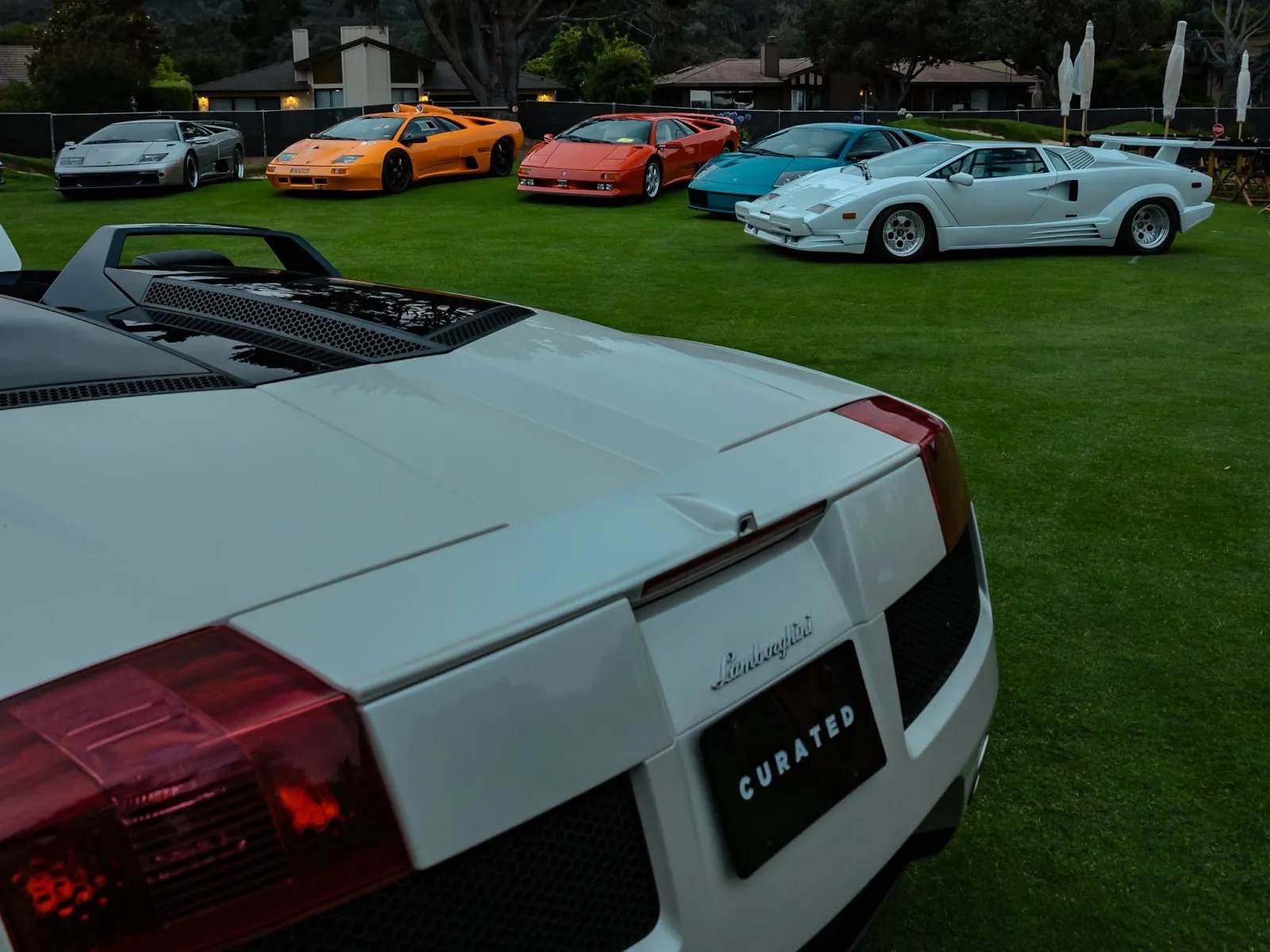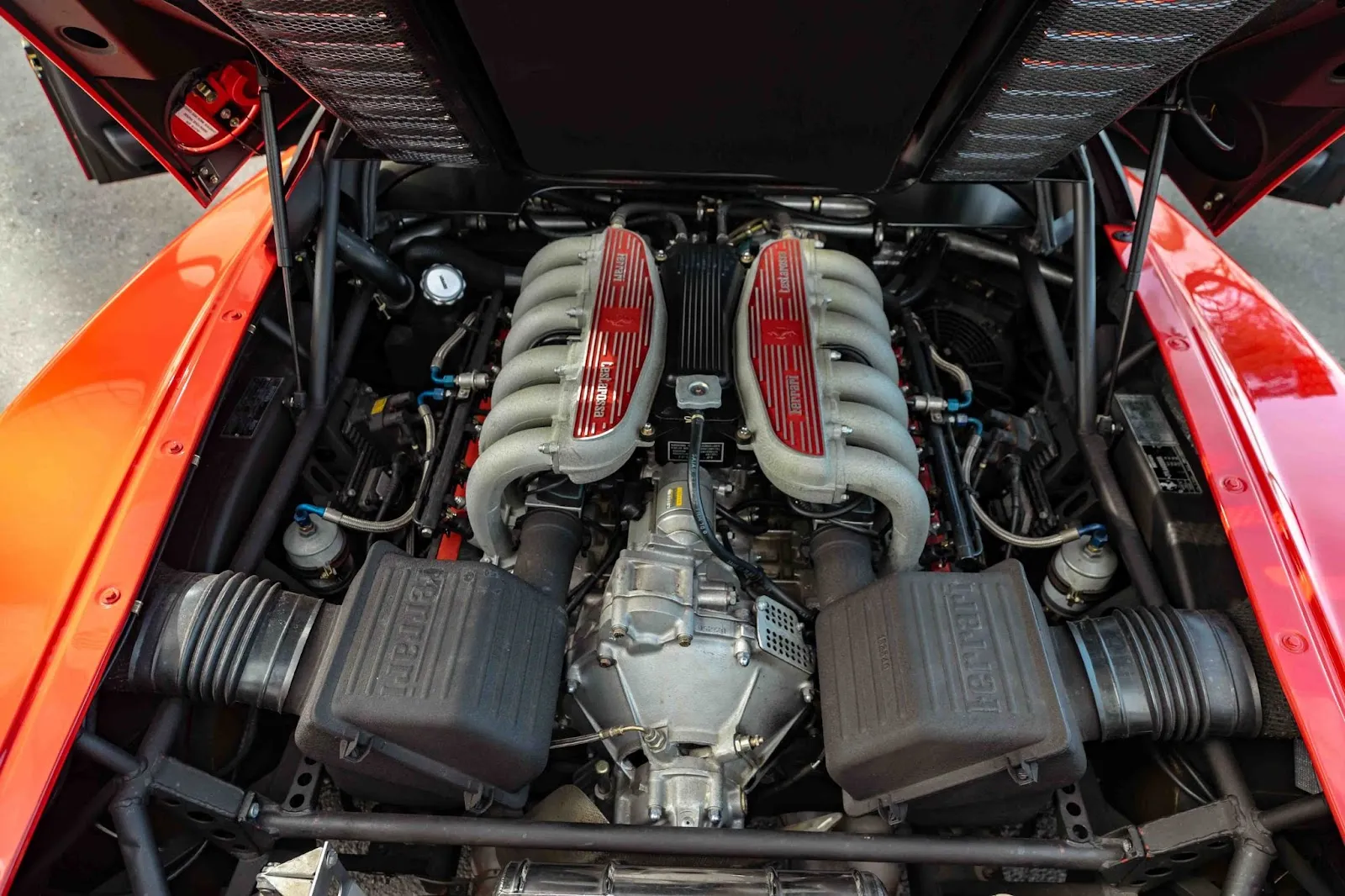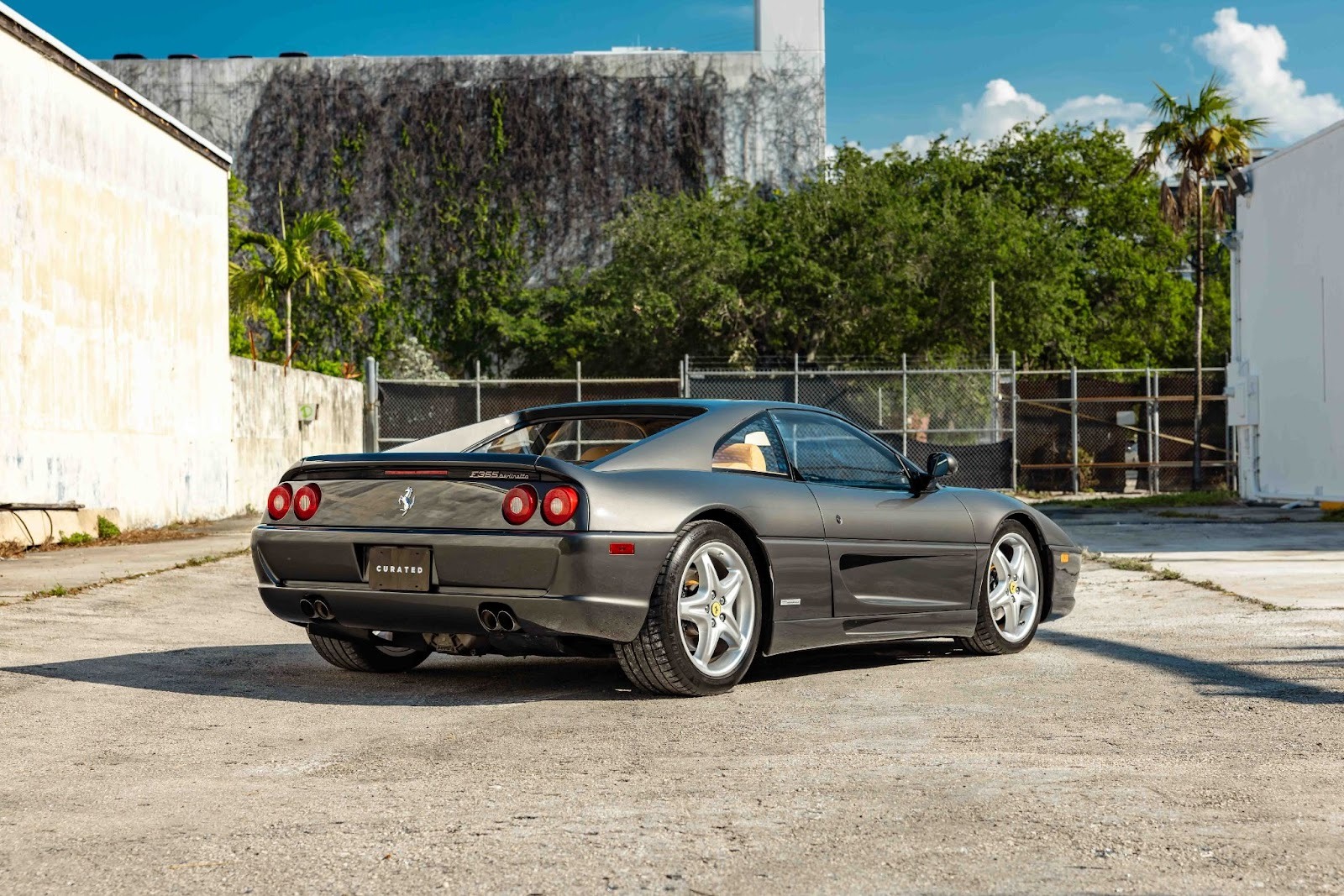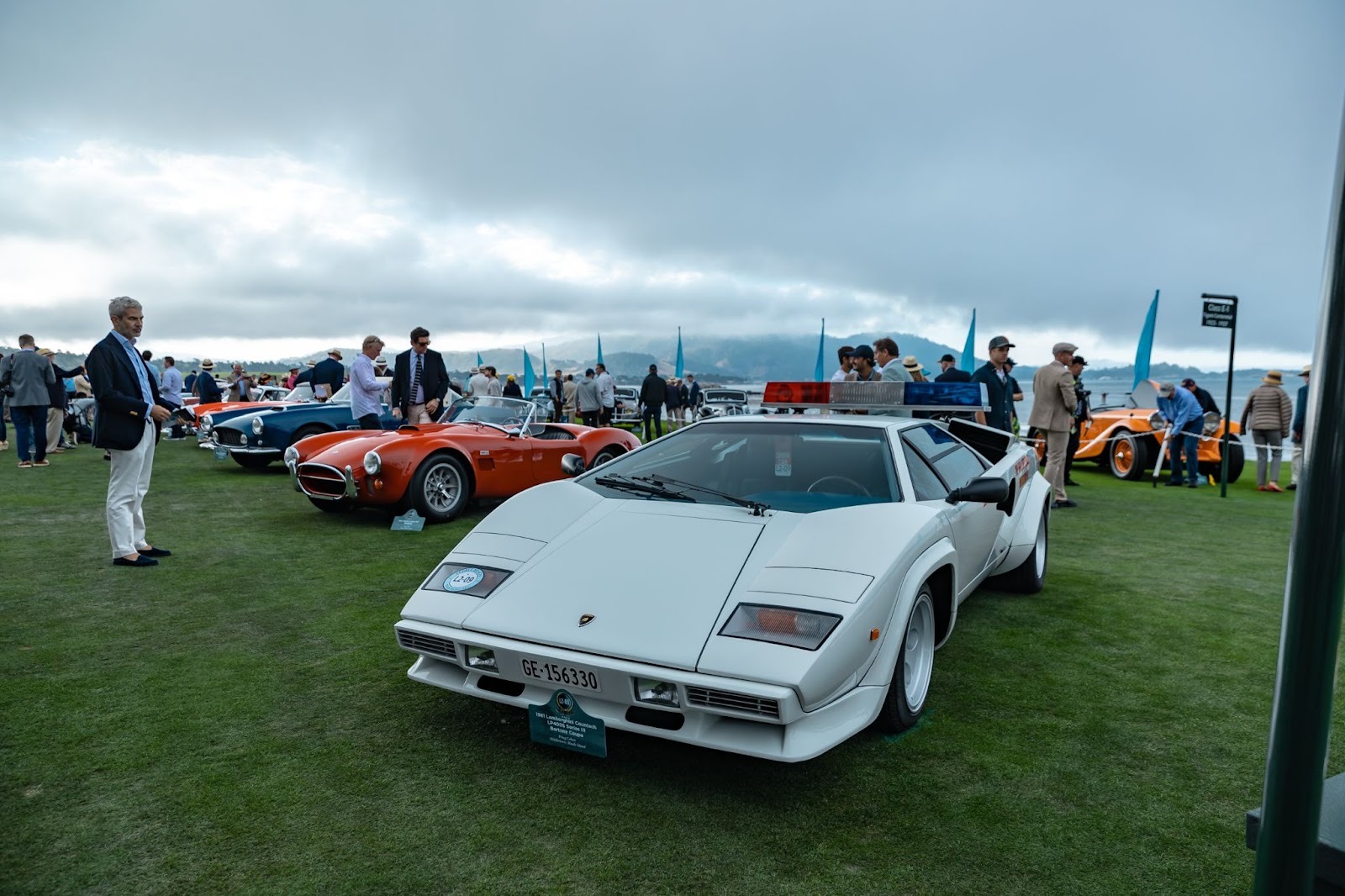The Surprising Economics of Supercar Value Appreciation
Ralph Lauren's Ferrari F50 sold for over $9 million, up 67% in one year. Discover why vintage supercars are appreciating fast and see what drives their value up.

Ralph Lauren's rare yellow Ferrari F50 just shattered auction records at $9.245 million. Five years ago, that same car might have sold for half that amount or even less. In 2020, an excellent example sold for $3.2 million at Scottsdale, with a repainted one fetching $2.5 million in Monterey. In one word, the world of vintage supercars is now about smart investing, and the numbers are telling a remarkable story.
The appreciation of supercars has exceeded expectations in recent years, with certain models achieving double-digit returns at auctions. The Ferrari F50’s example proves it well. Supercars from the 1990s and early 2000s are now selling for prices that would have been unthinkable just a decade ago. What distinguishes some of these cars from other investment-grade vehicles?
The answers lie in understanding three critical factors: rarity, condition, and timing. Which supercars hold their value best? What drives appreciation in these models? And how can a buyer recognize the next Ferrari F50-level breakout before it happens? We are covering these all below.
Defining the Super & Hyper
Not every fast car becomes a collectible investment. Specific characteristics distinguish true supercars and hypercars from high-performance sports cars.
Performance benchmarks provide the entry criteria. We're talking about cars that achieve 0-60 mph in under 4.5 seconds, produce over 400 horsepower, and reach top speeds exceeding 180 mph. But raw numbers only tell a part of the story.
Rarity, innovation, and design influence collector perception just as much as lap times. Limited production runs create scarcity, while technological innovations, like the F50's Formula 1-derived carbon fiber monocoque, establish historical significance. The design language plays a significant role; cars must be unmistakably exotic and purposeful, even decades after production ends.
Ferrari's "Big Five" hypercars exemplify these principles perfectly. The 288 GTO, F40, F50, Enzo, and LaFerrari each represent technological pinnacles from their respective eras, with production numbers deliberately kept low to maintain exclusivity. The F50's position in this elite hierarchy is a reason for its investment merit. Not only is it a fast car, but it also has a bloodline that commands respect at auction.
Do Supercars Appreciate? The Data Says Yes

For decades, the conventional wisdom was that supercars were a depreciating asset. Buy a new Ferrari, lose 30% driving off the lot. The recent market performance has completely shattered that narrative.
Monterey Car Week 2025 generated $432.8 million in total sales. It was the second-highest total in the event's history. Modern Ferraris dominated the results, claiming eight of the top 10 auction slots. The Ralph Lauren F50 wasn't an anomaly, because it represented a broader trend toward appreciation in supercars.
"These 1990s supercars will be considered as fine art," explains John Temerian, co-founder of Curated. His prediction is already materializing. Cars from roughly 1980-2006 have become today's blue-chip automotive investments, driven by their status as the last purely analog performance machines.
The data supports this shift convincingly. Ferrari F50 values have increased over 60% in just one year, with the model's average sale price reaching $5.3 million. Even high-mileage examples are breaking records. A Lamborghini Diablo GT with a good amount of miles on its odometer (63,000 kilometers or 39,000 miles) sold for $1.4M, which was another mind-boggling sale.
There is more to this appreciation than just supply and demand. The younger generation of buyers are seeing 1990s supercars the same way their parents saw 1960s muscle cars. These younger collectors were raised on Gran Turismo and The Fast and the Furious, and they created emotional connections that transcend any traditional automotive enthusiasm.
Understanding Supercar Depreciation
Despite the recent appreciation trends, certain supercars may still have predictable depreciation curves that savvy investors can take advantage of. Understanding this lifecycle is essential for properly timing such purchases.
Initial steep depreciation hits hardest in the first three to five years. New supercars lose 20-40% of their value immediately, as the novelty premium evaporates and early production issues surface. This phase separates genuine enthusiasts from status buyers who quickly move on to the next latest thing.
After 8-15 years after production, cars tend to experience a value trough when they are too new to be considered classic yet too old to be considered cutting-edge. This is the ideal time to buy for future appreciation. The plateau years follow, when values stabilize as the model finds its natural market level.
The activation of appreciation triggers occurs when cars reach 15-25 years of age. Nostalgia kicks in, production numbers feel genuinely limited, and surviving examples become increasingly rare when they are in a pristine condition. This is when mileage, condition, and provenance create a stark value differentiation between 'garage queens' and driver-grade examples.
"The cars we're seeing on records today are cars that I chased for many, many years," confesses John Temerian. "Unfortunately, I wasn't able to buy it, but it was one of 31 Giallo Modena Ferrari F50s built for the world, one of only two examples finished as a US car, a very, very low mileage car that belonged to a collector for many, many years."
John made a great point by pointing out that the best investment-grade examples rarely hit the open market during their depreciation phase. Collectors who understand their long-term potential hold them, creating a scarcity that leads to eventual appreciation.
This combination of rarity, provenance, and condition exemplifies the type of collector supercars that we at Curated specialize in finding and documenting. Our approach is to thoroughly research the history of each vehicle before presenting it to serious collectors.
The Supercars That Hold Value Best

Certain models have earned a reputation as reliable value holders. The common characteristics of these cars make them appealing to both collectors and investors.
Ferrari F50
The F50's recent performance demonstrates how provenance and rarity multiply value. Ralph Lauren's Giallo Modena example achieved such a massive appreciation not just because it's an F50, but because it's one of only two US-specification cars in that color (yellow). Just think about it - it’s 0.573% of the total F50 production. Add Ralph Lauren's legendary ownership, detailed documentation, and excellent condition, and you have a perfect storm for record-setting results.
Ferrari F40 LM
The F40 LM that sold for $11 million at Monterey represents another pinnacle of analog supercar engineering. With only 19 examples built by Michelotto, these cars combine F40 heritage with racing-derived performance. The lack of electronic aids and pure mechanical connection creates an increasingly rare driving experience that collectors prize above all else.
Ferrari 512 TR
The one-owner 512 TR that doubled its estimate to reach almost $800,000 demonstrates how condition and documentation can elevate even more common models. Finished in desirable Blu Pozzi over crema leather, this car checked every box collectors seek: single ownership, low mileage, proper maintenance, and classic color combination.
These examples have key success factors such as limited production, analog engineering, proper maintenance history, and desirable specifications that distinguish them from more common variants.
Rarity: The Key to a Strong Investment
In the supercar investment world, rarity multiplies value exponentially. Production numbers are the foundation, but true rarity is often due to specific combinations of color, specification, and ownership history that make individual cars unique.
The Ralph Lauren F50's Giallo Modena finish keeps it unique. The majority of production is red Ferraris, but rare factory colors like yellow, blue, or silver command significant premiums among collectors.
Celebrity provenance adds another layer of desirability. Ralph Lauren's automotive collection ranks among the world's finest, including multiple Ferrari 250 GTOs, a Bugatti Type 57SC Atlantic, and numerous McLaren F1 variants. When he releases a car from his collection, which is rare, it carries his signature of taste and quality.
Low production numbers create scarcity, which drives long-term appreciation. Compared to a standard F40, the F40 LM's 19-unit production run is roughly 40 times rarer. The Diablo GT's 80-car production versus over 2,900 regular Diablos creates a similar scarcity. The limited runs guarantee that demand will likely exceed supply for a long time.
But rarity without desirability means nothing. The cars that are appreciated most combine genuine scarcity with emotional appeal and historical significance.
Maintenance Costs

Owning a supercar comes with significant ongoing expenses that have a direct impact on its resale values. Proper maintenance keeps investment potential intact, but deferred service can completely destroy it.
Ferrari Classiche Certification represents the gold standard for documentation and authenticity. The Ralph Lauren F50's renewed certification in December 2024 confirmed that all components remained original and exactly as specified from the factory. This documentation provided bidders confidence that justified the record price.
Fresh service records demonstrate ongoing care and roadworthiness as collectors increasingly prefer cars they can drive immediately rather than restore.
It’s also worth noting that supercar maintenance costs can be substantial. However, these costs pale compared to the value destruction caused by deferred maintenance. Regular service is a must in order to preserve value, as a supercar with a questionable service history could sell for 30-50% less than a properly maintained model.
Maintaining comprehensive documentation is crucial. Service invoices, parts receipts, and maintenance logs all contribute to the provenance that sophisticated collectors demand. Cars that have complete files are more likely to sell faster and at higher prices than those with gaps in their service history.
Investing vs. Collecting — Which Hat Do You Wear?
The supercar market serves two distinct buyer types, each with different priorities.
Investors who are solely focused on financial returns are seeking cars that will appreciate most rapidly and have minimal ongoing expenses. They typically prefer garage queens with ultra-low mileage, complete documentation, and specifications that maximize rarity. These buyers often view cars as alternative investments, similar to rare wine, where emotional attachment takes second place to potential returns.
Collectors and enthusiasts place a higher priority on driving experience and emotional satisfaction than investment potential. They're willing to pay premiums for cars in their favorite colors or with specific options, even if those choices don't maximize investment returns. These buyers frequently agree to higher ongoing expenses in exchange for having their cars in use.
"I know you guys have argued with me for 10 years about this, but I think we're going to see a massive shift," continues John. "These 1990s supercars will be considered as masterpieces." His prediction suggests the market is maturing toward an investment mindset, where the finest examples trade like art pieces rather than automobiles.
The psychology of ownership creates interesting market dynamics. Investors frequently sell cars quickly when their appreciation targets are met, generating supply for the next buyer. Enthusiastic collectors tend to hold cars for longer, which reduces available inventory and supports price appreciation over time.
As a result, investments like F50s and F40s appeal to both buyer types, offering proven appreciation potential and emotional rewards.
At Curated, we believe in a hybrid approach. Buy cars you'd genuinely enjoy owning, but choose examples with strong investment fundamentals.
Investing in a Supercar

To invest in a successful supercar, it is necessary to systematically evaluate the factors that drive long-term value appreciation. By following our checklist, it is possible to identify cars with the greatest potential returns.
- Buy documented, low-mileage examples. Comprehensive service records and minimal odometer readings provide the foundation for strong resale values.
- Look for rarity in color or specification. Unusual factory colors, rare option packages, or limited production variants create scarcity that drives premiums. Common models can also become valuable if they have unique characteristics that stand out from the majority.
- Prioritize original parts, certification, and known service history. Factory authenticity becomes increasingly important as cars age and modified examples flood the market.
- Consider cultural significance and media presence. Cars featured prominently in movies, video games, or automotive media often develop followings that go beyond pure performance metrics.
- Factor in future regulation and infrastructure changes. While internal combustion engine bans and changing infrastructure may impact long-term usability, collector car exemptions usually protect vintage cars.
Also consider storage costs, insurance requirements, and geographic market preferences. Some models may appreciate faster in specific regions due to local enthusiasm or regulatory advantages.
What to Expect Next
After years of dramatic appreciation, it appears that the market is poised for stabilization. According to Hagerty data, the collector car market is experiencing a soft landing like it did in 2015, with prices slightly softening in 2025 but setting new baseline values instead of crashing. But it’s only a part of the whole picture!
First, the demand for analog supercars will increase as new performance cars become mostly hybrid or electric. The psychological appeal of "last of breed" ICE supercars will likely intensify as they become rare experiences rather than simply old cars.
The buyer base continues to expand as millennials and generation Z reach peak earning power through the 2030s (including generational wealth transfer). This new generation of buyers is also more familiar with digital transactions and global markets, which helps expand the potential buyer pool.
Geographic diversification of wealth worldwide (North America, Asia, Pacifics) provides new buyer pools for iconic models.
These are only a few factors that will continue to contribute to the rising demand for 20-30 year old supercars and increase their appreciation over the next few decades.
Preserving Automotive History
Founded in 2015 by John Temerian and Jordi Ricart, we, at Curated, consider ourselves as automotive historians committed to preserving vintage supercars. Having procured over 500 European supercars from the 1970s through early 2000s, we've established ourselves as one of the most knowledgeable authorities in low-production blue-chip automobiles from this golden era.
"When you design a car, you're not designing a machine. You're designing an emotion," observed Marcello Gandini, designer of the Miura and Countach. Our approach is based on this philosophy, which is to preserve the most significant chapter of automotive history for collectors who acknowledge that today's record-breaking auction results are tomorrow's automotive heritage.















.webp)
